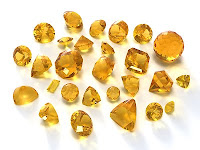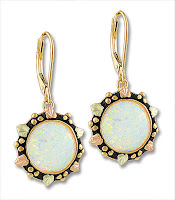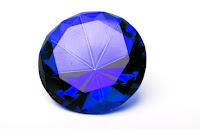
Though it is generally accepted that the custom of birthstones originated from the Breastplate of Aaron, a religious article which held twelve gemstones representing the twelve tribes of Israel, over the years different cultures have interpreted the instructions for fabricating the breastplate differently resulting in a variety of birthstone lists. And though it is also probable that these stones were assigned according to astrological sign, in recent times it has become popular to appoint the variety of birthstones to the months of the year. The month of December, the final month of the year, is certainly no different in this respect and has a number of possibilities.
The modern birthstones for December have been Turquoise or Tanzanite, but in recent years Blue Zircon has become very popular. Turquoise is a valuable and ancient mineral which has found strong popularity in jewelry made by Native Americans. In fact, some of the finest turquoise comes from the southwestern United States. Esteemed for thousands of years as a holy stone, its blue and green color is created by its composition of both copper and iron, respectively. But being a soft and sensitive stone, turquoise must be coated and cared for or it will lose it’s color with time.
Another popular choice for December’s birthstone is Tanzanite, the blue variety of the gemstone zoisite. First discovered in Africa in 1967, it is named after the only place in the world where it has ever been found, Tanzania. It has since become one of the most popular and desired gemstones in the world for its deep blue aura, thanks primarily to New York jewelry company Tiffany who soon after its discovery marketed the stone heavily to the general public under the name Tanzanite. Consisting of calcium aluminum silicate and a Mohs’ Hardness of only 6.5 to 7, tanzanite is a delicate stone which also requires much care.
Blue Zircon is one of the true Biblestones in the Breastplate of Aaron, where it appears in the third row under the name “ligure”. But zircons reputation has suffered in modern times because of its names similarity to “cubic zirconia”, a lab-created gem used as a diamond simulant. Occurring worldwide, zircon is also mined for the metal zirconium, which is used for abrasive and insulating purposes.
The name Zircon is most commonly believed to be derived from the Persian word “zargun”, meaning golden-colored, as one of the most common varieties of zircon is yellow.
Zircon can be found naturally in a variety of colors as well as in its colorless state, which resembles the diamond in luster and dispersion. But by far the most popular color of zircon today is blue, which is produced with higher temperatures. And bearing a Mohs’ Hardness rating of 7.5, it is significantly harder than both turquoise and tanzanite, and though it is somewhat susceptible to chipping, it remains an excellent choice for daily wear, and works well as a component of a mothers ring or mothers pendant.
Some historians believe that each birthstone may have originally been worn throughout the year by everyone, in rhythm with the zodiac, since each gemstones powers were heightened during its respective month. If so, why not start your own collection of birthstone jewelry, one for each month of the year?









